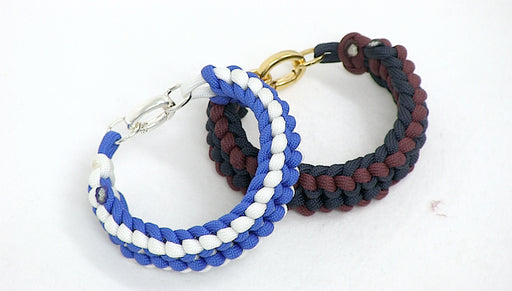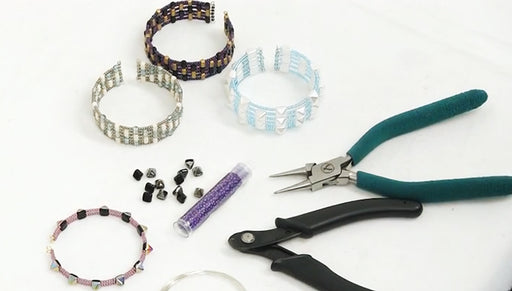
|
JudiKins Diamond Glaze Water Based Adhesive (2 Fl. Oz.) SKU: XTL-1020 $10.99 |

|
Mod Podge Gloss All-In-One Decoupage Sealer / Glue / Finish (8 fl. oz. ) SKU: XTL-1040 $10.29 |
Hi. I'm Becky Nunn with Nunn Design and this is a line of findings that we're developed a Patera findings. Patera is latin for ornamental amulet. These Patera are lead free pewter and are designed by us at Nunn Design And are casted in the United States. We cast them and then plate them creating these high end jewelry findings that are affordable and easy to use. Here are some different things you can do with some Patera findings. Resin. Polymer Clay. Photographs. Collage sheets to make pendants rings or bracelets. In this segment we're going to make collaged jewelry using Nunn Design collage sheets and filling them with the Diamond Glaze and the DG3. We have four different styles of collage sheets that you can choose from: paris, collage birds, bathing beauties, and birds and butterflies. We designed the collage sheets to fit with the Mcgill punches that we distribute. We have a line of seven different punches that you can choose from. And these punches punch out the perfect circle, the perfect oval, the perfect heart, and it drops into the Patera finding. Very snuggly. Giving a very professional look. We're going to take our collaged sheet and we're going to slide it inside the punch. Lining it up just perfectly inside of there. Using pressure on both sides we're going to press down and punch the image. Over time the punch will start to get dull on inside and sometimes it will get gummed up if you add adhiesive on your piece. You can use a cleaner to clean out the inside and a sharpener to keep the blade sharp. You can use any image inside of the Pateras whether it be a photograph inkjet, laserjet, scrapbooking paper, newspaper clipping. Whatever you want to use is great as long you seal it to prevent the inks from running. You can use Mod Podge which is available at www.beadaholique.com I'm going to take my image and I'm going to turn it over and make sure I have a nice clean surface to work on. When I turn it over I start to seal the back side with my medium brushing it on making sure that all of the edges are coated so that none of the Diamond Glaze or DG3 that we are going to be using will seep into the sides and discolor it. This will also help it be like a little bit of a laminant in the base of the Patera. So once i have image all the way coated, I'm going to take my little screwer and pop it up off the sheet and over. So now I'm created a little glue for the back. I'm going to place it inside of the Patera. I place it on the front of the Patera and burnish it down on all edges making sure that all the air bubbles are out and that the Petera is secure inside of the setting. I like to go back in with my skewer and make sure that all of the edges are secure and that all the excess glue is off of the edges. Then I take my medium and go over the top again making sure that my image is fully protected. It's important to take your time during these steps because this is a major part but the success of the piece. Once our sealant is dry, we're going to go ahead and use the Diamond Glaze over the top of the image of the Patera. Giving it a nice glossy finished look. I like to start my glaze, in this case the Diamond Glaze on the side first making sure that it's flowing out smoothly and that there's no air bubbles. Now I'm going to start it in the middle and squeeze nice and consistently. The when I take my paint brush which I washed off my sealant while it was drying and I'm going to press it around inside of the Patera. Bring it all the over to the edges. If you noticed it's a little cloudy once you first put it inside don't worry because it will dry clear. The Diamond Glaze works great on the thinner Pateras and for the thicker Petaras, the deeper Pateras we recommend DG3 which I'll show you next. On the deeper Peteras we recommend the DG3 and again I'll start the flow on the side to make sure isn't air bubbles before I press it inside and squeeze filling it all the way up to the top. Now I was really careful when I started my DG3 in the side and you can see I have an air bubble right here. and I don't have any inside. I'll just make sure that all of the glaze is in there and there is not any air bubbles. If there were some air bubbles what I would do is that I would slide them over to the edge with my little skewer or with a pen. The one I'm holding is dry now. You can see it has a little bit of a concave look so you can go ahead and put another hit of the DG3 glaze on top of the dry one again I'm going to take it over to the side and and start it flowing so there isn't any air bubbles coming out. Slowly squeeze the DG3 right into the Patera again. And this is going to help it have a more domed look. Drying time will depend on humidity and your location and what I like to do is take a little glass dish and place it over the Petera to prevent them from getting any dust on them while they cure. Once the images have dried and Diamond Glaze and the DG3 is cured you can make them into these fabulous little pieces of jewelry using the Nunn design connector bars and chains. These are the examples that we did with the Diamond Glaze and a sample that we used with the DG3. Have fun creating. Go to Beadaholique.com for all of your beading supplies needs!
Related Videos


How To Make Decorative Headpins
Make your own decorative headpins using a few standard jewelry making tools and some craft wire. Make these indispensable and beautiful headpins to...
View full details

How to Make a Ladder Paracord Bracelet
n this video, see how to create a Paracord Bracelet using a Ladder knotting technique. This technique looks best when two colors are combined to br...
View full details

How to Create a Memory Wire Cuff
In this video see how to use create a cuff using two holed beads and memory wire. This is a different application for memory wire that is tradition...
View full details